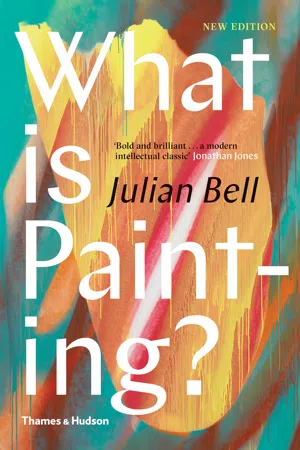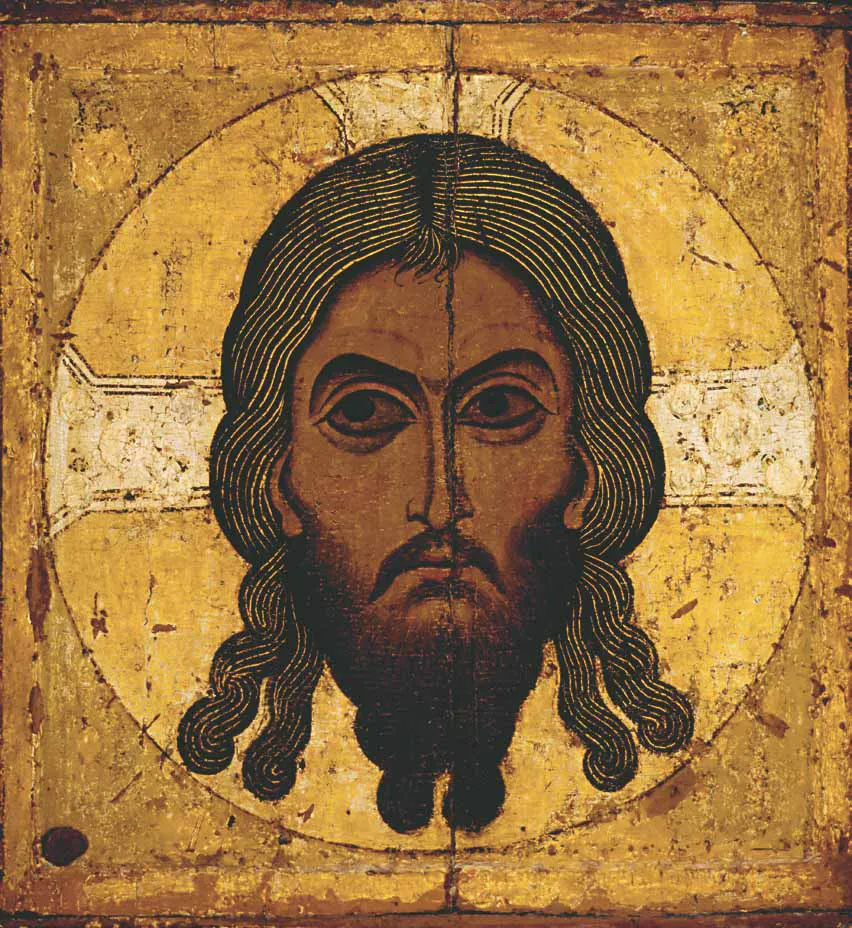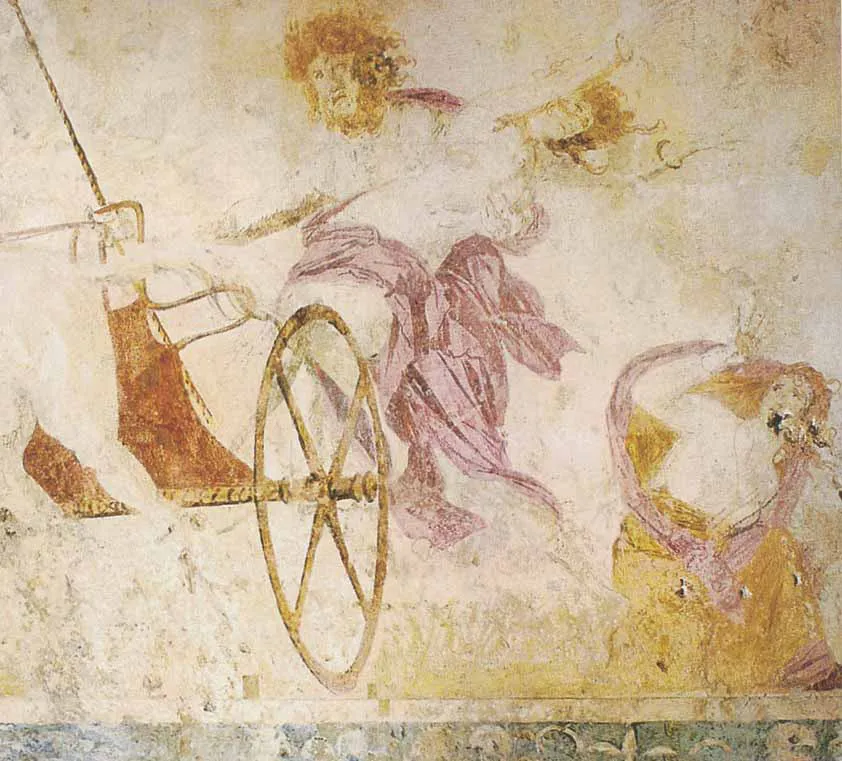![]()
1. IMAGES AND MARKS
The first words in Western culture concerning man-made images categorically warn us against them:
Thou shalt not make unto thee any graven image, or any likeness of any thing that is in heaven above, or that is in the earth beneath, or that is in the water under the earth: thou shalt not bow down thyself to them, nor serve them.
Why? What makes the God of the Bible forbid all likenesses in the Second Commandment, before pronouncing on killing, adultery and theft?
Images draw us in. The desire to make and attend to likenesses has been powerful throughout history. Their presence in human society has been the rule, and their absence the exception, during the last six thousand years. The Ten Commandments, however, set a control on this desire to make likenesses; but even a people bound to Moses’ law, as the Old Testament relates, needs to be repeatedly restrained from making and contemplating ‘idols’.
How man-made images have been understood in history is the concern of this book. In particular, it examines the images called paintings, and specifically the history of the last two hundred years, during which painting seemed to part company with the age-old desire for likenesses. But this development of modern art needs to be understood within much larger traditions. A contest of feelings about images stretching back to ancient Israel and Greece underlies the complex values we now give to that word ‘painting’.
Original and Image
For the Bible, an image may be any object made by humans so as to look like something first made by God. The prophets of the Old Testament deplore the fact that people, creating these secondary objects, start to revere the work of their own hands. In doing so, they turn their backs on the original maker of objects. Instead, so the Hebrew tradition accuses, they regard what they have made as a visible god. But God is the maker not the made, and is not to be seen; God lies behind sight.
Detail of a relief from the tomb of Ankhmahor, Saqqara, showing Egyptian sculptors working on two statues, sixth dynasty, c. 2345–2181 BCE
A Jewish text from the 1st century BCE, the Wisdom of Solomon, dwells on idolatry with scornful amazement. A carpenter takes an offcut of wood and ‘by the skill of his understanding, fashions it to the likeness of a man’; then, fastening it to the wall to stop it falling, ‘for it is an image, and hath need of help’, he ‘for life, prayeth to that which is dead’. Do not be deceived, the writer adds, by ‘an image spotted with divers colours, the painter’s fruitless labour’.
The writer of these words was very likely casting aspersions on the visual culture which dominated his era and which still influences ours: that of ancient Greece. Greek accounts of image-making and its origins are at first sight quite different. The legend given by Pliny, for instance, is sweetly romantic. A maid of Corinth was bidding farewell to her lover, who was about to cross the sea; noticing his shadow cast on the wall by a candle, she seized a stick of charcoal from the fire and traced its outline. The scene was often depicted by late-18th-century painters, no doubt influenced by the contemporary fashion for silhouettes.
David Allan, The Origin of Painting, 1775
The impulse of the Corinthian maid, in the legend, was enough to initiate likeness-making. Yet that impulse was prompted by an imminent absence, the departure of her lover. For her, the tracing was evidently a second-best, a substitute: ‘Only a picture’, as we say. In fact, for all their dissimilarity, the Greek storytellers and the Hebrew prophets share several common premises about man-made images. They take it that an image is not the original thing, but is – or ought to be seen as – a substitute for it; and that, nevertheless, it has a fascination in its own right, a power to command the eyes. In sum, they believe that the image is initially made as a channel for human desires, but that it subsequently diverts them.
The Vernicle, a Russian two-sided icon, 12th century
These intuitions about images spread very wide in human culture. Turning to the image to answer our wishes, we take it to have a dependent, secondary relation to the original that is its cause. If we rely on it to satisfy our demands, this is often because we believe that it is itself reliably attached to the object for which it is a substitute. This attachment may have a physical status: the camera’s mechanical record of transmitted light is a guarantee of this sort. But even if such a material attachment is lacking, we may uphold the status of the image by a principle of spiritual attachment. For instance, we may say that the likeness of someone holy or divine has been directly imprinted on the working material by an inspiration from above, with the human maker merely functioning as a tool. Thus in the Orthodox Church, icons of the Saviour were produced with minimum deviation century after century because they were intended to be acheiropoietai, ‘things made without hands’. The lack of individualized intervention made them transparent receptacles for their divine content.
Yet this appeal to divine inspiration was used to defend images against the contrary intuition: that they may deflect our attention from what they represent. The visible substitute may gain favour at the expense of the absent, invisible person or entity it stands for. Between the original and the viewer the seductive power of image-making intervenes, a force that may be seen as magic and malign. This suspicion was voiced not only in the Jewish tradition but also, with an added twist, in the early 4th century BCE, by Plato in The Republic. Painters, Plato accuses, distract our attention with their likenesses of the way things look; yet the way things look is itself only a poor likeness of their true nature. For truth belongs with the idea: the permanent, God-given form behind each appearance we perceive. Copying mere appearances, the painter ‘knows nothing worth mentioning about the subjects he represents’, and we can conclude, Plato writes dismissively, that ‘art is a form of play, not to be taken seriously’.
In this attack on image-making, Plato – following his mentor Socrates – characterized the practice as mimesis, a noun formation from the verb mimeisthai, meaning ‘to mime’, a bodily performance in which you tell a story, or bring someone’s presence to mind, without speaking. The insistent, attention-seeking aping of appearances that invited Plato’s scorn may perhaps be seen in the few fragments of sophisticated fresco painting to have survived from his day, such as the tomb mural discovered at Vergina in northern Greece. We might call it ‘painterly flair’, but in terms of Plato’s theocentric approach, it was triviality on triviality, at a double remove from the truth. Mimesis, however, was to become the principle that would underpin the intellectual status of Western painting for centuries.
The development is due to Aristotle, writing a generation after Plato. Rather than attempting to transcend the visible world, the younger philosopher was concerned with giving a coherent account of it, and he saw mimesis as a vital tool in doing so. He used the term to describe something that happens throughout painting, sculpture, poetry and drama, and also in some forms of music. Through these means, wrote Aristotle, people enact the likenesses of other persons or phenomena – that is, they ‘put themselves into them’, as it were – as a way of comprehending them. ‘It is through mimesis that man develops his earliest understanding.’ Children, then, with their make-believe and toys – their ‘early learning aids’, as we now say – were included in Aristotle’s psychology. All such activities, from his point of view, offered a sane way of widening the mind’s access to the world, with the potential to cleanse the emotions rather than to tantalize and warp them. Play might be an alternative to work, yet play still had a purpose.
The Rape of Persephone by Hades (detail), Vergina, c. 340–330 BCE
This acceptance of images by Aristotle on the one hand, and the Platonic and Judaic rejection of them on the other, hinge on an ancient and well-trodden opposition of terms: knowledge versus feeling, logic versus intuition, head versus heart. Aristotle inclines to see images as coming from one side of the opposition: people make them because of their wish for knowledge. Plato suspects them of coming from the other: people make them to indulge their desires – vain desires, from his point of view.
The battle between these two viewpoints has not gone away. Among Christian societies, proponents of Plato’s suspicion have included the original ‘iconoclasts’, who banished images from churches in the Byzantine Empire during the 8th century, and the Puritans who smashed up much of Britain’s artistic past during the 16th and 17th centuries. In their wake, comparable destructions of art were carried out by secularizers during the French Revolution and China’s 1960s ‘Cultural Revolution’. Meanwhile Muslims, from the time of the Prophet onwards, have followed Jews in being wary of figural imagery, and most recently it has been Islamist movements which have courted attention by carrying out spectacular acts of iconoclastic violence. There is an understandable impulse to call their perpetrators ‘barbarians’, but the supposed point of principle behind such actions – that images are made to cater to human desires, and that they can divert them – is one that any form of civilization has to acknowledge, for instance via its policies towards pornography. As long as images continue to have force, so do objections to them.
The Imitation of Nature
Despite these resistances, most Christian traditions have highly valued image-making, as have the secular ideologies that sprang up in their wake. And along with Aristotle’s ready acceptance that it was normal for people to make images, cultures that cared for painting, sculpture and poetry accepted his tenet that mimesis was a common rationale for all three arts. Up until the later 18th century, when ideas of painting started to expand into the diversity we now call ‘modern art’, most writers who discussed the practice took it as an assumption that whatever else they might mean to do, painters were satisfying the common and reasonable wish that people had to have ‘mimicked’ on flat surfaces sights that they might not otherwise be able to see.
Mimesis was generally translated, in the academies where this theory grew from the Renaissance onward, as imitation; in other words, it was accepted that the first business of painters was to make a resemblance of something. That something bore the general name of nature. In what is often termed ‘the classical theory of painting’, the standard epithet for the painter’s art was thus ‘the imitation of nature’. Neither term of this formula, however, was entirely unambiguous.
‘Imitation’ seems to suggest someth...




